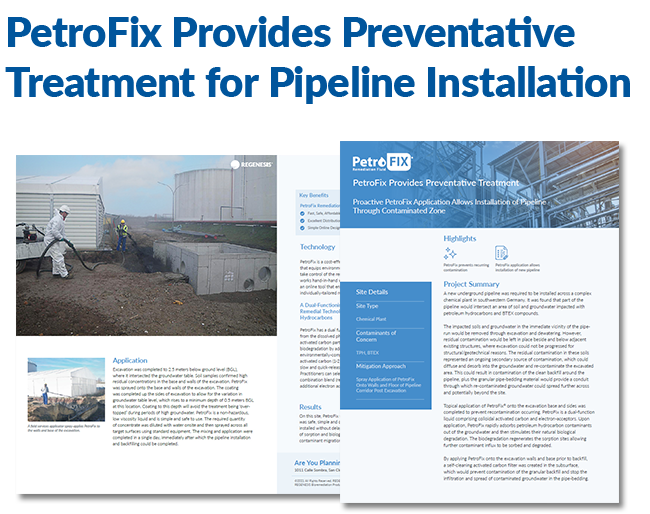This case study reviews a new underground pipeline that was to be installed across a complex chemical plant in southwestern Germany. It was found that part of the pipeline would intersect an area of soil and groundwater impacted with petroleum hydrocarbons and BTEX compounds.
Case study highlights:
- PetroFix prevents recurring contamination
- PetroFix application allows installation of new pipeline
- Spray application of PetroFix onto walls and floor of pipeline corridor post-excavation
The impacted soils and groundwater in the immediate vicinity of the piperun would be removed through excavation and dewatering. However, residual contamination would be left in place beside and below adjacent existing structures, where excavation could not be progressed for structural/geotechnical reasons. The residual contamination in these soils represented an ongoing secondary source of contamination, which could diffuse and desorb into the groundwater and re-contaminate the excavated area. This could result in contamination of the clean backfill around the pipeline, plus the granular pipe-bedding material would provide a conduit through which re-contaminated groundwater could spread further across and potentially beyond the site.


